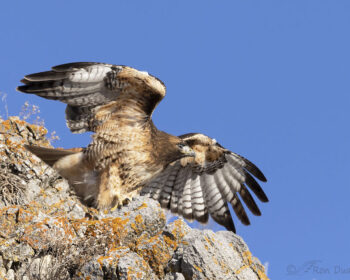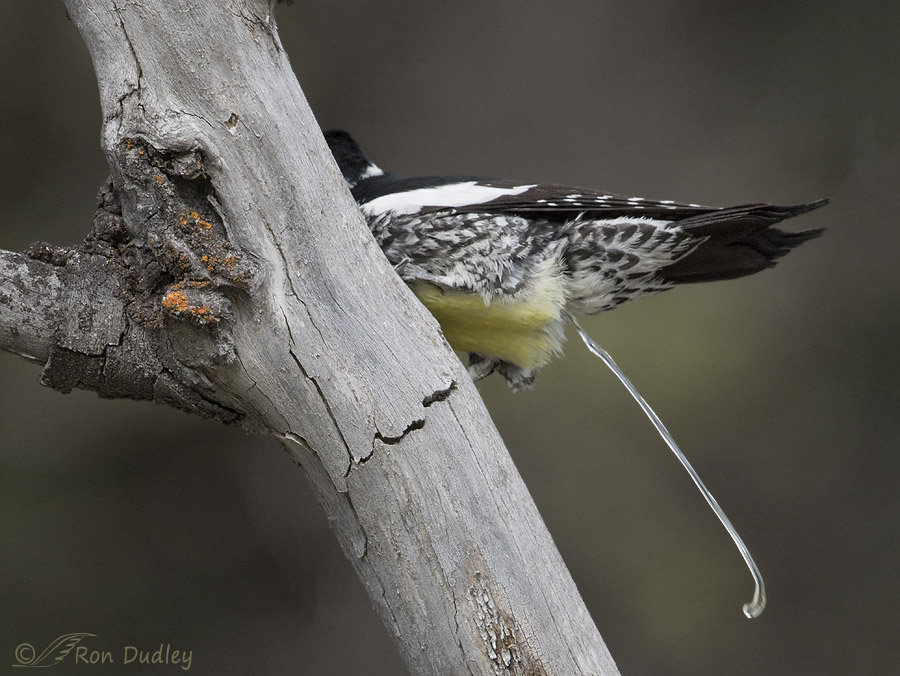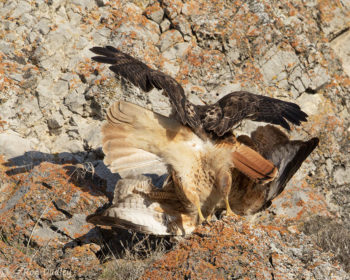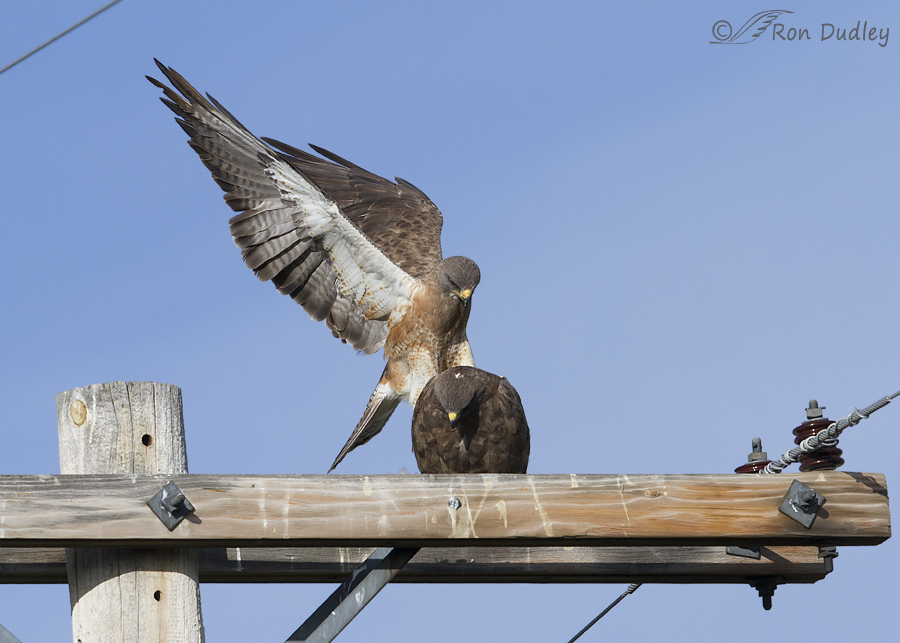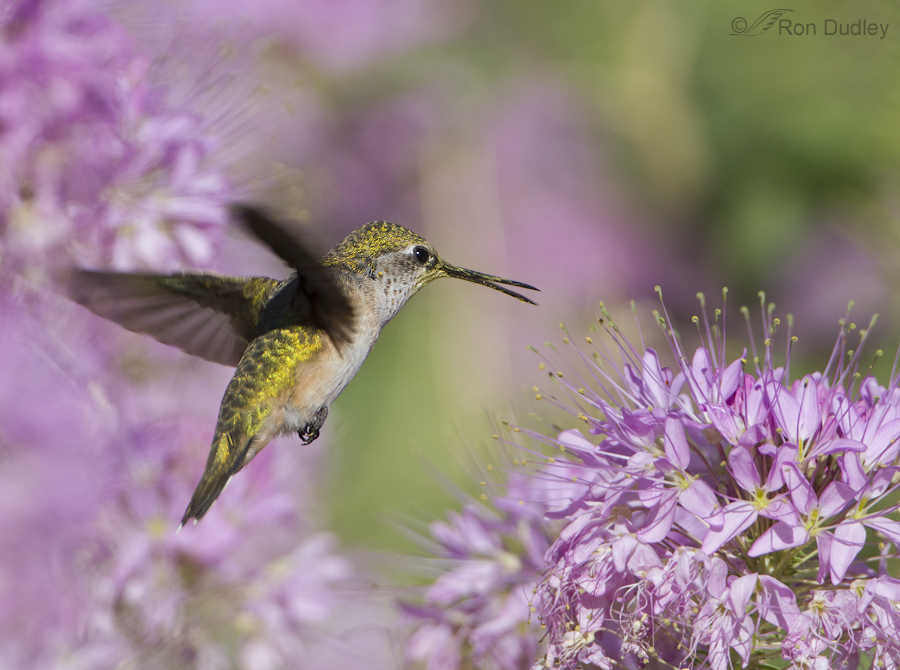Tag: cloaca
The Cloaca And A Lesson In Bird Poop
Meet The Mated Pair Of Red-tailed Hawks, Together This Time
The Cloaca And A Lesson In Bird “Poop”
Mating Swainson’s Hawks
Some Interesting Hummingbird Biology
Poop, Perches and Personal Preferences
Many raptors are “sit and wait” hunters, which means they often hunt from an elevated perch instead of “on the wing” and Red-tailed Hawks are well-known for this practice. An elevated perch provides good views over a large area and no extra energy need be expended in flight while looking for food. Typically these birds will use the same productive perch repeatedly over long periods of time, which presents a challenge to the photographer – poop (hereafter referred to as “whitewash”). Whitewash consists largely of crystalline uric acid (it’s more complicated than that but I’ll try not to stray into a discussion of the functions of the cloaca), which tends to be bright white. That whitewash can create some aesthetic and ethical conflicts between a “natural shot” and an image that has been “Photoshopped” to death, primarily by use of the clone tool. Many photographers routinely clone out whitewash and/or droppings and I’ll admit that I’ve done it before, but for me it’s an ethical dilemma because I much prefer to leave my images as natural as possible since I consider myself to be a “nature photographer”. In fact, right now I’m struggling with a series of Horned Lark images that I really like, but there’s a large, fresh and very conspicuous dropping right in front of the birds foot that most would find distracting. I could clone it out but every time I looked at that image I would know what I’d done. Canon 7D, 1/4000, f/5.6, ISO 640, 500 f/4, natural light, not baited, set up or called in A couple of days…
Lark Sparrows – A Unique Mating Behavior
Back on May 25 of this year, on this post about Lark Sparrows, I made the following statement at the end of the post: “Now that I have some decent images of this species my next goal with them is to capture some of their unique behaviors. These birds often pass a twig from the male to the female during copulation (an impressive display of multitasking and concentration). And they do a turkey-like strut during courtship. I would love to capture either behavior.” In your comments, several of you gave me encouragement in meeting that goal and 11 days later I was at least partly able to do so. These are those images. A couple of these photos may be a little “clinical” for some, but to me it’s all behavior and it’s all interesting. Techs for all images were: 1/4000 or 1/3200, f/6.3, ISO 640, 500 f/4, 1.4 tc The courtship of Lark Sparrows includes behaviors found in no other songbirds. Prior to actual mating, the male struts like a turkey, with its tail sticking up to show off its white tail spots and its wings drooping to the ground. Then, before the male mounts her, he picks up a twig (or twigs) which he passes to the female just before copulation. When mating is complete (they may mate or attempt to mate up to 20 times in 3.5 minutes) the female often flies off with the twig. The courtship had already begun when I approached this mated pair. Normally, this species doesn’t allow me to get this close…
The Cloaca And A Lesson In Bird Poop
Meet The Mated Pair Of Red-tailed Hawks, Together This Time
The Cloaca And A Lesson In Bird “Poop”
Mating Swainson’s Hawks
Some Interesting Hummingbird Biology
Poop, Perches and Personal Preferences
Many raptors are “sit and wait” hunters, which means they often hunt from an elevated perch instead of “on the wing” and Red-tailed Hawks are well-known for this practice. An elevated perch provides good views over a large area and no extra energy need be expended in flight while looking for food. Typically these birds will use the same productive perch repeatedly over long periods of time, which presents a challenge to the photographer – poop (hereafter referred to as “whitewash”). Whitewash consists largely of crystalline uric acid (it’s more complicated than that but I’ll try not to stray into a discussion of the functions of the cloaca), which tends to be bright white. That whitewash can create some aesthetic and ethical conflicts between a “natural shot” and an image that has been “Photoshopped” to death, primarily by use of the clone tool. Many photographers routinely clone out whitewash and/or droppings and I’ll admit that I’ve done it before, but for me it’s an ethical dilemma because I much prefer to leave my images as natural as possible since I consider myself to be a “nature photographer”. In fact, right now I’m struggling with a series of Horned Lark images that I really like, but there’s a large, fresh and very conspicuous dropping right in front of the birds foot that most would find distracting. I could clone it out but every time I looked at that image I would know what I’d done. Canon 7D, 1/4000, f/5.6, ISO 640, 500 f/4, natural light, not baited, set up or called in A couple of days…
Lark Sparrows – A Unique Mating Behavior
Back on May 25 of this year, on this post about Lark Sparrows, I made the following statement at the end of the post: “Now that I have some decent images of this species my next goal with them is to capture some of their unique behaviors. These birds often pass a twig from the male to the female during copulation (an impressive display of multitasking and concentration). And they do a turkey-like strut during courtship. I would love to capture either behavior.” In your comments, several of you gave me encouragement in meeting that goal and 11 days later I was at least partly able to do so. These are those images. A couple of these photos may be a little “clinical” for some, but to me it’s all behavior and it’s all interesting. Techs for all images were: 1/4000 or 1/3200, f/6.3, ISO 640, 500 f/4, 1.4 tc The courtship of Lark Sparrows includes behaviors found in no other songbirds. Prior to actual mating, the male struts like a turkey, with its tail sticking up to show off its white tail spots and its wings drooping to the ground. Then, before the male mounts her, he picks up a twig (or twigs) which he passes to the female just before copulation. When mating is complete (they may mate or attempt to mate up to 20 times in 3.5 minutes) the female often flies off with the twig. The courtship had already begun when I approached this mated pair. Normally, this species doesn’t allow me to get this close…


